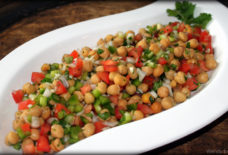Aspects of Arab Culture and Influence in the Lands of Brazil
Brazil BloggerBy: Joyce Behrens/Arab America Contributing Writer
When we think about where Arab influence and culture expands to, our minds go to two different directions. First, Europe, particularly, countries that border the Mediterranean Sea. Second, the land of opportunity and dreams, as known as the United States. However, what about Arab influence in countries located south of the equator? Specifically, the country with the biggest melting pot of cultures in South America. Brazil is the largest country of diverse cultures in the world. Whether it’s the food or the customs, aspects from the Arab world followed its way to Brazil. Check out how Brazil embraces the Arab world.
Early History
Executive Magazine Migration is the main factor in the expansion of Arab influence. The earliest traces of Arab migration to Brazil dates back to the 1870s. The last Brazilian emperor of that time, Dom Pedro II, made visits to the Middle East. There is a legend that states he noticed a couple of peasants while on a voyage in Lebanon. He stopped and spoke with the peasants about their struggles. Pedro II was known as the emperor who encouraged those to come to Brazil if they wanted a second chance of life. The majority of the first Arab immigrants in Brazil, during the first migration, came from Lebanon.Another era of early Arab migration occurred during the early 20th century. Migrants came from the Levantine region. Specifically, modern-day Lebanon, Syria, and Palestine. Arab Christians fled from the Ottoman Turkish Empire. In order to find new opportunities. Meanwhile, Brazil had a small population while being the leading nation for rubber. One way to assist in manufacturing is to hire more workers. This created a diverse melting pot of cultures from Europe, Asia, and the Levantine region of the Arab world. There were other jobs that Arab migrants worked in during these times. Arab emigrants worked as peddlers, as known as traders. However, difficult conditions couldn’t be avoided, such as 20 hour days and long travel in hostile environments. Despite these adversities, they pocketed more money for themselves. Payments from working in agriculture went straight into the pockets of the agrarian landlords.
Food
As people know already, food represents history on a plate. When it comes to Arab cuisine in Brazil, the food is recognizable to Arab culture. There is another story about how Arab food found its way to Brazil besides the Arab migrants bring their heritage with them. It just has some Brazilian touches. Around 700 B.C., the Moorish empire took control of Portugal and Spain until the end of the 15th century. Demolitions of any landmarks or visible cultural representations of the Moors followed. However, food still existed. The Moors brought with them rice, oranges, olives, and pomegranates to Portugal and Spain. When Spain and Portugal developed roots in Brazil, roots that are still prevalent today, the Arab heritage followed along with them.
Eat Rio Let’s take a look at the most popular Arab food items in Brazil today. These are common foods that you find on Mezza platters. The only differences are the names and pronunciations of the food. For example, Kibbeh, which is a layered fritter, is a common snack in the Arab world. The outer layer is a mix of bulgur wheat and diced beef. While the inner layer is minced beef incorporated with pine nuts and onions. Popular in Brazil, but it is known a Kibe in Portuguese. Since Brazilians love savory, small snacks, or salgados, these are a favorite. Deposit Photos Another delicious creation from the Arab world is esfihas. These are similar to fatayers. Miniature pies filled with either spinach, minced beef, or cheese. The only difference is esfihas are thinner triangles, while fatayers are dumpling-like. A simple snack food, but tastes delicious. Brazilians call these esfirras. Same pronunciation because the two Rs make the H sound. You can find these foods not only in restaurants but on the beaches in Rio. Vendors walk long distances on the beach to serve the sun-seekers and tourists.
Literature
Several Arab Brazilian authors have found success in their writing. What amazes me about their writing is their creativity and unique vocabulary that transformed Brazilian literature. An example of a well-known Arab Brazilian writer is Milton Hatoum. Born in Manaus, Brazil to Lebanese parents. He has won the Jabuti Award, Brazil’s highest literary prize, three times for best novel. One of his novels includes Tale of a Certain Orient (1998), which is the story of Emilie, who is on her deathbed with her family circulating around her to say goodbye. They share past memories starting from the early 20th century when a relative left Lebanon for Brazil.
Another Lebanese Brazilian writer, who is considered as Brazil’s Greatest Writer of all time, is Raduan Nassar. His prime was during the 1970s for his literary work. Also, a winner of the Jabuti Award for best debut. Ancient Tillage, which depicts a coming of age story. Andre lives day-to-day life in the Brazilian outback as a routine. One day, he flees his homeland and family. When he returns, his loved ones see him as a different individual, but in a negative manner. Nassar has now quit writing, but his works continue to live on.
Check out our BLOG here!



